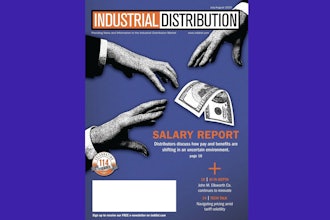
As distributors react to the new challenges of the economic downturn, some are reevaluating their approaches to price management. The 5 principles described below are based on key learnings about effective price management practices from past recessionary cycles. They can provide useful, practical guidelines for distributors working to maintain a level of financial success as they navigate through the new realities.
1. Don’t fight non-price driven volume loss by lowering prices:
If a large customer experiences a drop in their business, they will not buy as much as before. No discounting will bring this volume back. It is dangerous to your profits to try to fight this non-price problem by drastically lowering prices (though you should obviously defend your turf, if a competitor attacks). Take a clue from airlines most affected by the downturn: if demand drops, try to find ways of cutting back on supply or capacity, rather than slashing prices. You likely have more control over your profitability than you do over your volume. Slashing prices will just further hurt your profitability when sales declines may already be unavoidable, and price wars may be ignited.
2. Take immediate steps to cut volume loss due to price, where you suspect this may be happening:
If you are guilty of having been a bit greedy in pushing high margins at small accounts for example, it is time to correct your pricing. In the good times before the recession, many customers were more busy, focused more on growth rather than on cost containment. Higher prices might have gone undetected. Now, the tables have turned, and more customers are focused on cost containment. High prices are much more likely to cause volume loss. Also, now more than before, every sale counts. Small accounts may carry the higher margins, and these sales may be key to keeping your business profitable. There are many things you cannot control in the current state of things, but it is in your power to fix pricing problems that you know (or suspect) may be causing loss of profitable sales in your business.
3. Do not price gauge, even if you could:
There is much uncertainty about the future of the economy – and one uncertainty is low long before things turn back to a state of relative normalcy. You may be fortunate to have supply on hand which is hard to procure, i.e., because of supply chain disruptions. If so, do not engage in unethical pricing behaviors, such as price gauging (though supplier cost increases should of course be passed on). Your customers will have long memories if you do. You should, however, review your sales policies. Your best customers should be prioritized in who gets to purchase items in short supply. Additionally, policies such as rationing may also be a fair way to handle these situations: for example, you can limit purchase quantities to levels considered normal based on historical purchase patterns.
4. Use price and forecasting to manage cash flows and inventories tightly:
Cash is king. You may wish to use, and more tightly enforce, pricing mechanisms such as early payment discounts that can help improve cash flow. Make sure you send out invoices in a timely manner, and follow up promptly on overdue balances. Be careful about where/how you dump inventories at low prices to generate immediate cash flows, if this type of action is necessary. Price drops are less likely to stimulate demand in the current environment, so you may have a hard time finding a buyer. Offloading inventories at low prices can also start a price war that can spread to other parts of your business. Also, your sales folks should be in discussions with large accounts, so you are able to keep a pulse (as much as possible) on the kinds of inventories you should carry. Your procurement team should be in constant contact with suppliers, so you can react quickly if supply chain disruptions may materialize. Volume always matters, but now is a good time to shift more focus to forecasting and cash management.
5. Project confidence in your value proposition and your pricing:
A demoralized, panicked employee base will not win in this environment. Their potential lack of confidence can be especially damaging when it comes to pricing. Your frontline sales force likely needs guidance on how you expect them to deal with the new challenges. This should include guidance in the pricing area. They should be reassured that the value proposition of your business continues to be strong. They should be confident that your price levels remain valid and justified in the current environment as well (or you are making appropriate adjustments), and that management will make the right calls to get the business through the tough times we are facing.
As the recession starts to hit, certain external conditions impacting price management are beyond the control of most distributors. However, distributors continue to have significant control over a number of important factors relating to pricing and profitability management. Distributors can use various pricing strategies and tactics to ensure they responding to the challenges in proper, measured, thoughtful ways. Depending on how long the current challenges persist, the effectiveness of distributors’ responses may impact the future shape of their businesses and markets for many years to come.
 Lee Nyari
Lee Nyari























